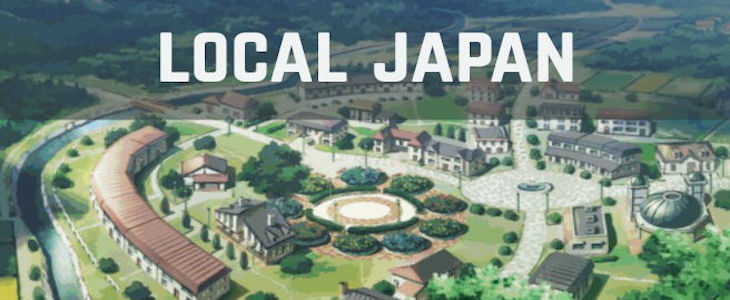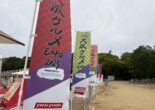
Local Japan: Catch your Dreams in Machida-shi, Tokyo
I am pretty sure that every one of you are familiar with Pokemon, the game and the anime legend of Ash Ketchum (or Satoshi, based on which country version of Pokemon you watch) from Palette Town and his pet monster Pikachu. However, do you know where on Earth Palette Town is?
Of course, it is a fictional town on fictional world, but Satoshi Tajiri, the creator of Pokemon who also shared his own name to the cartoon’s main character, created Palette Town based on his own hometown, a small beautiful city in the outskirt of Tokyo, named Machida-shi (-shi is the suffix for ‘City’). That’s where I live.
Machida is one of the city under Tokyo Metropolitan Government (Tokyo-to). The estimated population of the city is around 430,000 people residing in approximately 72 square kilometers of area. Small calculation can show you that the population density in the city is only 6,000 people per square kilometer, just one-third of the population density of Shinjuku, which is around 18,500 people per square kilometer, distanced only 40 kilometer away.
Literally, I live in Tokyo. However, very different from the bustling metropolitan in the 23-ku areas (places like Shibuya-ku, Shinjuku-ku, etc), my city is located in Tama area, where cities like Hachioji-shi, Tama-shi, and Machida-shi lie. Machida is adjacent to Kanagawa-ken (-ken is suffix for ‘Prefecture’) in the east, west, and south. In fact, in Machida, it is not impossible to do your morning run crossing several cities in Kanagawa, such as Yokohama or Yamato.
I moved to Machida in order to live with my husband who is currently studying in Tokyo Institute of Technology. The university has a campus in Yokohama, named Suzukakedai campus after the nearest train station, Suzukakedai Station which is a part of Den-en-toshi Line operated by Tokyu Corporation. We live near the campus, just 10 minutes of bicycle away.
For some other people, Japanese and foreigners alike, they chose to live in Tama area like Machida to avoid the high price of housing in downtown Tokyo, without sacrificing the work and good education that are usually available there. If you are happened to ride a train during rush hours in my area, you can see a lot of students and office workers packed themselves to a crowded train. They go to Tokyo in the morning and go back home in the evening. I really wish you don’t catch a wrong train in the wrong time.
My neighborhood is very peaceful and quiet, after 8 PM you can feel that all the residents are resting cozily in their houses. It is a very nice place for families to live in. In fact, the majority of the area is filled with housings, public and private ones. Danchi (government-subsidized housing) can be found almost in every corner of the city, as well as apartments and private houses alike.
The public places like schools, and supermarkets are within the reach. The price is also good, not as expensive as in the central part of the Metropolis, so you can save your money for some investment for your future.
If you desire to save some more money and look for even cheaper stuffs, you can go to some recycle shops that sprawl in many areas of the city. BookOff, HardOff, and everything with -Off suffix in it are the household brand for the matter. You can find used books, clothes, shoes, toys, electronic gadgets, and even furniture in the store. Also, as Japanese are famous for being neat and clean, the used goods just feel like new. Strange enough, I couldn’t find as many recycle shops in downtown Tokyo as in my neighborhood. It might be a matter of lifestyle or else, but it works in favor of me.
As the city is crossed by many rivers, usually we have parks located nearby to a river. The young and the old are enjoying the parks as people spread their picnic mats and children are busy playing.
During spring, we didn’t need to go far to enjoy hanami. There are rivers with sakura trees marching in their banks. My husband and I particularly liked to enjoy the cherry blossom in the nearby Onda River, where the scenery reminded us of Meguro River’s famous hanami spot in Tokyo. Besides the pretty trees, the river itself is calming, with the sound of water flowing through the rocks. Koi fishes are big and sometimes we can find swans swims there.
We also have Sakai River, the official border of Machida-shi and Yamato-shi of Kanagawa-ken. In Yamato-part of the river, they even have a dedicated pedestrian walk to enjoy various flower blossoms, in which sakura also present. Yes, it is located in another city, even in another prefecture, but why not if it’s within your reach?
When we miss the crowd, we can reach Shibuya Station within 45 minutes by Den-en-toshi Line, which is very convenient. Sometimes the same train goes as far as Oshiage Station, where you can climb up the Tokyo Skytree and enjoy the scenery of downtown Tokyo from the highest building in Japan. You can also go to Yokohama through JR Lines to enjoy Minato Mirai and its famous Pikachu parade!
If your kids cannot wait until summer for the Pikachu show, you can bring them along to Kodomo-no-kuni, an amusement park which was founded to celebrate the Royal Marriage of the current Emperor Akihito and Empress Michiko. In its approximately 250 acres of land, Kodomo-no-kuni has it all: water parks, zoo, lots of rides, and even a wide field where you can draw freely in its pavement with chalks.
If the parents and the adults of the family need some vitamin sea, you can go to Enoshima Island in Yokohama, just an hour away. It has a beautiful beach and everything else: shrines, temples, spa, aquarium, and even caves for you to explore. Of course, you can try out the local shirashi-don which is made from raw anchovies that are caught there.
Once you go back home, I am sure everyone in the family has refreshed and ready to gear up to catch some dreams.
Even for a housewife with an aspiration to continue my education, I can see that I can work for it. Tokyo Institute of Technology campus is very near and with simple registration, you can use their vast collection of books. Of course, they have a lot of science and engineering books, but a fact that not many people know is that they also have a good sum of collection of literature about Japan and Japanese culture. They even have textbooks to learn Japanese, supposedly are aimed for its students, but available to the public.
Another perk to live near a big university is that you can find a lot of foreigners in the city. Most of them live near the university and it is very likely to find a community that you feel most comfortable for you. Besides the community of my fellow Indonesian, I also join a Japanese class nearby (coincidentally the nearest is in Yokohama, although Machida also has similar classes and activities) where I can learn Japanese for free from the volunteers there. Not only the kind Japanese teachers, but I also meet a lot of fellow foreigners with the same passion to be able to speak Japanese. The community has a lot of activities together, not only classes, but also get-togethers and even a speech competition. Most of information that I know about living in Japan, Machida in particular, usually was obtained from these communities.
All in all, I like my decision to live in Machida-shi, Tokyo-to and I plan to raise my small family here for years ahead. I love its nature, I love its connectivity, I love how comfortable it is, and I love my community here. I would like to recommend living in Machida to everyone, especially to those who want to live in a peaceful neighborhood. If things go smooth, I would also like pursue my dream to study here as a student. And who knows, your wishes, someday you will catch ‘em all!



